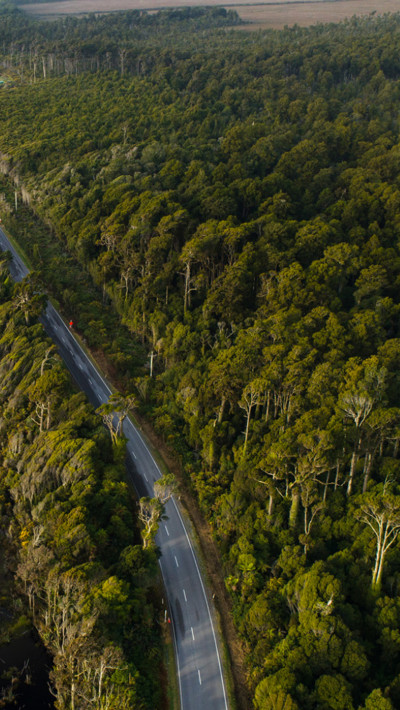Speak to our experts
Contents
The first climate reporting entities (CREs) will issue mandatory reports before 30 April 2024 under New Zealand’s climate-related disclosures (CRD) framework, for reporting periods starting on or after 1 January 2023. In addition, new CRD regimes continue to come on-line in other key jurisdictions.
In this update, we cover:
- Tweaks to technical aspects of the regime made in 2023, and
- Developments in other jurisdictions that are relevant to New Zealand CREs.
International Sustainability Standards Board
The International Sustainability Standards Board (ISSB) released the final version of two new standards in June 2023, following consultation in early 2022:
- IFRS S1 - a general sustainability standard that provides a set of disclosure requirements designed to enable companies to communicate about sustainability-related risks and opportunities, and
- IFRS S2, setting out specific climate-related disclosures.
Both standards incorporate the recommendations of the Task Force on Climate-related Financial Disclosures (TCFD) and parallel many aspects of Aotearoa New Zealand’s Climate Standard NZ CS 1. They were endorsed by the International Organization of Securities Commissions following a comprehensive review.
The ISSB will be responsible for TCFD monitoring responsibilities from 2024.
NZ CS 1–3 and ISSB CRD Standards – aligned but different
The development of New Zealand’s CRD Standards (NZ CS 1 – 3) by the External Reporting Board (XRB) tracked ahead of the ISSB process, but XRB maintained a close alignment between the two workstreams. Changes made to the ISSB Standards included removal of the ability to have an alternative process to scenario analysis and inclusion of a requirement to report on emissions intensity for scope 1 – 3 emissions.
Key differences still remain, however, and are outlined in an overview prepared by XRB. They include ISSB requirements to consider and disclose industry-based metrics.
ISSB CRD Standards as a new global benchmark
The ISSB envisages that the Standards will be incorporated into domestic reporting regimes around the world.
For example, the Australian Treasury has noted the importance of aligning its proposed reporting requirements with the ISSB CRD Standards (see further on this below). And the XRB’s CRD standards will be subject to a post-implementation review by December 2025 which will take into consideration global developments, including the ISSB CRD Standards.
Climate related disclosure schemes around the world
According to the 2023 TCFD Status Report (the organisation’s final publication before it winds up and is subsumed into the ISSB), 19 jurisdictions accounting for close to 60% of global GDP are now implementing or proposing mandatory TCFD-aligned reporting.
Australia
The Australian Accounting Standards Board released exposure drafts in November for three Australian Sustainability Reporting Standards based on the ISSB model, for feedback by 1 March 2024. This follows two rounds of consultation by the Australian Treasury on the details of the scheme, including the content of mandatory reporting and enforcement rules. The submissions have been published and draft legislation is now being developed, with the first reporting period to be in 2024-2025 for very large entities.

1. Regardless of size of assets, revenue or employees, a ‘controlling corporation’ under the Australian Federal National Greenhouse and Energy Reporting Act 2007 which applies to significant emitters will be in scope.
2. Limited assurance will be required over governance disclosures from Year 1 (not currently required in New Zealand).
As with New Zealand’s CRD Standards, and the ISSB CRD Standard, the Australian Standards will:
- require disclosures relating to governance, strategy, risks and opportunities, and metrics and targets;
- include scope 1, 2 and 3 emissions, with first-year adoption relief for scope 3 reporting; and
- mandate the use of transition plans and scenario analysis.
Key differences between the New Zealand CRD scheme and the proposed Australian scheme include:
- a phased approach based on company size: large entities will be covered from the commencement of the rules, medium sized entities in year two; and smaller entities in year three;
- the inclusion of large private companies;
- the Australian proposal currently only requiring banks, insurers and fund managers to “consider the applicability” of the disclosure requirements for financed emissions, as opposed to these being mandatory disclosures (which would be a significant departure);
- more extensive assurance requirements (extending assurance to substantive areas of the disclosures rather than solely GHG emissions, and requiring reasonable rather than limited assurance in later years); and
- a phased approach to assurance, with two years of assurance relief for Scope 3 emissions.
The CRD requirements would be drafted primarily as civil penalty provisions in the Australian Corporations Act 2001. Application, however, of misleading and deceptive conduct prohibitions to scope 3 emissions and forward-looking statements would be limited to regulator-only actions for a fixed period of three years. And, unlike the position in New Zealand, directors will not be deemed to be personally liable for defective climate statement disclosure.
Europe
In October 2023, the European Parliament adopted the European Sustainability Reporting Standards (ESRS) – a central component of the Corporate Sustainability Reporting Directive (CSRD) to apply to all large listed companies in the EU and (from 2028) to certain non-EU companies.
The “ambitious” standards, prepared by the European Financial Reporting Advisory Group (EFRAG), cover the full range of environmental, social, and governance issues, including climate change, biodiversity and human rights. Despite being extremely comprehensive, they represent only half of the reporting requirements initially proposed.
Changes from the original include:
- A broader reliance on materiality, especially with regard to scope 3;
- Adoption relief on topics such as scope 3 emissions, biodiversity and workforce disclosures for smaller companies (fewer than 750 employees) in the first year the standards apply; and
- Disclosures on biodiversity and transition plans being voluntary instead of mandatory.
To prevent unnecessary double reporting by companies, the Commission has ensured that the standards take account of discussions with the ISSB and the GRI to ensure a high degree of interoperability.
UK
UK reporting on mandatory climate related disclosures is already underway. The UK has confirmed its plans to create a Sustainability Disclosure Standard, to be based on the ISSB standards. The Department for Business and Trade aims to create the Standard by July 2024.
Refinement of the New Zealand CRD regime
New Zealand’s Climate Standards continue to be developed with new secondary legislation, as well as guidance and exemption decisions from the regulator, the Financial Markets Authority (FMA).
CRD record-keeping: regulations and guidance
CREs must keep proper CRD records in a prescribed manner for a prescribed period. It is an offence to fail to comply with these provisions. The FMA has set out its expectations in a guidance note published earlier this year.
FMA exemption for NZX foreign exempt issuers
The FMA will provide five-year exemptions from CRD requirements to issuers listed on the NZX that:
- have a primary listing on a recognised foreign exchange;
- are above a certain size; and
- are an NZX foreign exempt issuer.
Full relief means those CREs will not have to comply with climate reporting, assurance and record keeping duties in the Financial Markets Conduct Act. Partial relief is available for CREs that meet the above criteria and also have significant business operations or investments in New Zealand.
CRD timing mismatch
The FMA has also granted an exemption (with conditions) to better allow publication of CRD reporting by listed issuer and registered bank CREs within the statutory period of four months of balance date, rather than alongside the shorter NZX and Reserve Bank timeframes for publication of an annual report (within three months).
In practice, many large NZX issuers routinely issue their annual report within 45 to 60 days of their balance date so the exemption will simply allow them to continue doing that with CRD to follow within four months. The FMA aims to have a notice in place to give effect to this decision before the end of 2023.
XRB final guidance on sectoral scenario planning
The XRB in July released its final guidance on how to develop consistent and comparable sectoral scenarios for CRDs under NZ CS 1. The XRB provides guidance on key aspects of scenario analysis including engaging stakeholders, defining the problem, determining critical uncertainties, selecting temperature outcomes and pathways, drafting narrative and quantifying scenarios, checking quality and planning review.
XRB GHG assurance standard
The XRB finalised in August its temporary standard on assurance over GHG emissions disclosures in CRDs (NZ SAE 1), scheduled to commence from October 2024.
The standard has been developed in response to rapidly evolving international developments. The XRB plans to seek input further down the track on whether New Zealand should adopt the proposed International Standard on Sustainability Assurance 5000, a draft of which has been released by the International Auditing and Assurance Standards Board (IAASB).
The temporary assurance standard sets out requirements concerning ethics, independence, competence, using the work of others, management bias, fraud, non-compliance with laws and regulations, comparative information, independent assurance report, documentation and quality management.
XRB initial transition planning guidance
The XRB in August issued initial guidance on transition planning (sub-titled “Questions to get started”). More detailed guidance will be released for consultation in early 2024. This is coupled with a range of key international developments on the fast-moving topic of climate transition planning.
The UK Transition Plan Taskforce in October released its ‘gold standard’ Transition Plan Disclosure framework, disclosure against which may become mandatory for certain UK companies. In September, investors representing $150 trillion in funds called for mandatory reporting of climate transition plans in Australia. With a range of lenders and investors requesting transition plans from portfolio companies, this will be a key area to watch in 2024.
























































